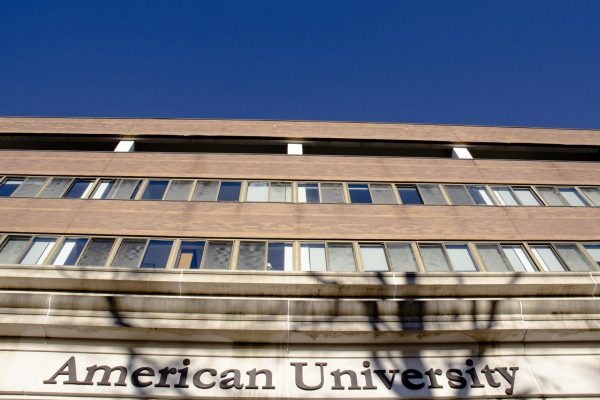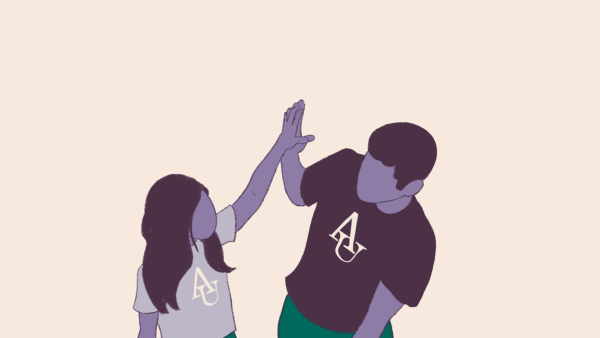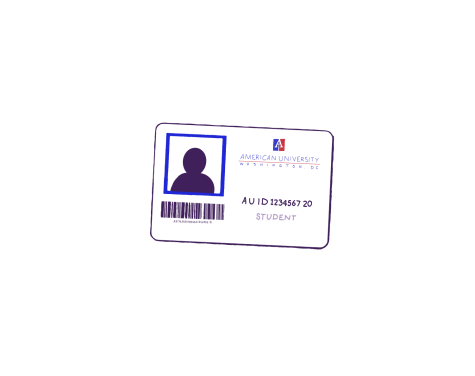Under Reconstruction: Student Media Board
Student media leaders work to reform the Student Media Board after it dissolved last spring.
American University’s Student Media Board is undergoing a reconstruction after the Center for Student Involvement (CSI) conducted a mass review of all student groups, causing the board to dissolve last spring. After discussion last summer and this fall, members working to reform the board have decided on new baselines for the group’s constitution to send to CSI.
Jamey Simpson, the director of Photo Collective, participates in the Student Media Board work group.
“As our semester comes to a close, we’ve begun to wrap up the student media work group. We all decided to create a constitution of sorts that holds each media organization accountable to standards we stipulated in a document that will be released soon,” Simpson said.
The Student Media Board was a group of media leaders from 10 different student media organizations on campus. The organizations are groups that create radio, broadcast, film, music and print content.
According to American University’s Student Media website, campus media organizations are an outlet for students to exercise their creativity. Each organization has its own purpose and goals, meaning they contribute differently to the university’s community.
In the past, the Student Media Board created budgets for their organizations and collaborated with each other on various matters like workshops and recruitment. Since 2019, board members also earned a $730 to $1,500 stipend for their work each semester, according to Assistant Vice President for Community and Internal Communication Elizabeth Deal.
As the Fall 2022 semester began, the academic year started without an official Student Media Board. However, the board is being reconstructed. Deal addressed the reconstruction of the board in a statement sent to AWOL.
“Last spring, as part of a larger student involvement assessment, the Center for Student Involvement (CSI) initiated a review of all student groups, including the Student Media Board,” Deal said. “As a direct result, student media, AU Student Government, and programming working groups were created.”
Nine media organizations from the dissolved Student Media Board are participating in this work group: American Television Network, AmLit, AWOL, The Blackprint, The Eagle, HerCampus, Photo Collective, Second District Records and WVAU.
This past summer, the work group held meetings to discuss what the Student Media Board’s role on campus would be in the future. This fall, the group met several times per month to continue the discussion.
Deal said the working group’s goal is to make recommendations to CSI about a new structure and operation plan for the board. According to Deal, what the board comes up with should support “student engagement and thriving while also ensuring that organizations act as good stewards of student activity fee funds.”
“This student involvement assessment is a year-long process, and CSI looks forward to continued collaboration with all working groups,” Deal said.
According to Simpson, the board has recently decided on the recommendations below.
“Each media organization will have at least one representative on the board and they will all coordinate when planning events and trainings for staff and leadership within their respective organizations,” Simpson said. “My hope is that these new changes will encourage more collaboration between clubs and make student media more cohesive as a whole.”
At past meetings, members have discussed how to define student media. They also determined the overall responsibilities of the board, according to Simpson.
“It was just another bureaucratic arm that didn’t really do a lot,” Simpson said. “And the things that matter, like budgeting decisions, for example, they always happen above that Student Media Board anyway.”
Former Editor-in-Chief of the university’s HerCampus from 2021 to 2022, Peyton Bigora, said she didn’t see the board as very impactful.
“I mean, it was always good to have a home base to talk about financial situations and so on,” Bigora said. “But I can’t say I ever left one of those meetings like ‘oh, thank God we really needed to hammer out that issue.’”
Former member of the Student Media Board in Fall 2021 and former general manager of American Television Network, Gabe Ferris, said that the board’s purpose was not very clear to its members.
“We always seemed to get different ideas of what Student Media Board was and why its purpose existed,” Ferris said. “Our primary function through and through was to approve spending.”
Ferris said it was “not surprising” to him that the board disbanded.
“I think the Student Media Board’s experience or relationship with the Center of Student of Involvement was a bit challenging at times,” Ferris said.
The recent statement from Deal addresses the progressions that the Student Media Board has gone through over time.
Deal said the Student Media Board began in 2010 and has adapted to the changing needs of the board since. The board structure in 2014 included an advisor from the former University Center Student Activities team. In 2017, the board included two members from each media organization. This changed to include just one representative per organization in the spring of 2020.
“During this time, CSI began addressing excess reserves and the need to ensure the funds are spent appropriately,” Deal said. “Funds allocated each year are expected to be used during the academic year they are allocated.”
Deal said that student media did not use all the money allocated to them from previous years, and those funds were stored.
“The student activity fee funding is not intended to serve as a savings account,” Deal said. “$100,000 from Student Media reserves were used to fund Student Media this year versus allocating new funding from academic year 22-23 student activity fees.”
Because the board is not running this semester, members are not receiving stipends as they have in the past.
In students’ eyes, the stipends have served as compensation for the hard work they have put into their own organizations and for sitting on the board, according to Megan Long, former general manager of American Television Network and member of the board from 2020 to 2022.
“Obviously, running a student media organization is a lot of work and at that point, they were getting stipends which makes sense because it is like a full-time job, full-time position,” Long said.
Student media organizations play an important part in campus life, Long said.
“[Student media] also benefits AU as an organization and also benefits students, and it’s a great way to get information out there and everything like that,” Long said. “So the stipend was just acknowledging that and helping people out who felt like drowning in work sometimes.”
Current work group members discussed whether stipends should be given to board members and who should determine the total amount of these stipends, according to Simpson.
Simpson said this was complicated for the university, and stipends wouldn’t personally make him “a better director of Photo Collective.”
Co-President of Second District Records, Sean Carlson, explained that while some people on the Student Media Board think the board advisors should determine the stipend amounts, he said he believes the board shouldn’t rely on the university.
“The point of Student Media Board is to control our own destiny and get rid of the sort of AU bureaucracy that we’re often subjected to,” Carlson said. “And we feel that if we put it in the hands of professors or CSI advisors, it would be mishandled.”
The prior Student Media Board constitution that details the composition and operations of the board was updated in August 2021 on the student engagement website, Engage.
In Section iii of the constitution, which lays out the guidelines for new organizations entering the board, it says, “leaders are entitled to a stipend at a level determined by the Media Board.”
The constitution also had a list of responsibilities that the board must uphold: The board is responsible for promoting collaboration within the university community, establishing expectations for publications, facilitating the development of new media organizations, maintaining funding, resolving any grievances between media organizations and advocating for the student media body.
Carlson sees the function of the board as aligning with the 2021 constitution, however, he said that the previous board did not reflect the constitution.
“It didn’t really end up working out like that,” Carlson said. “I don’t want to call it a lack of effort, because I guarantee you that every single person on Student Media Board in the past years has wanted to make something happen. But I think the goals that were set out just weren’t meaningful enough to the organizations.”
Long said that the lack of action from the board was due to large workloads.
“I feel like when I was on the board, it was a lot of talking and planning and not a lot of doing much, and that wasn’t because of the members of the board,” Long said. “It was just kind of like we were all overworked with our own organizations.”
The student leaders in the work group all have their own opinions on how the board should be restructured. Still, they have a common goal of improving the board for future leaders.
“The discussions can get a little bit tricky at times. And often, we don’t get very far. And it’s more so just a discussion,” Carlson said.
Carlson said many board members will not return next year because they are seniors.
“We would hate for the people in our organizations who are juniors, sophomores, freshmen to have to deal with this again,” Carlson said. “So we’re hoping soon, whether by the end of the semester or end of the year, that we have a plan for the Student Media Board.”
This article is from AWOL’s 31st print edition.
Grace Hagerman is a sophomore studying journalism and political science.
Emma Pierce is a freshman studying CLEG.
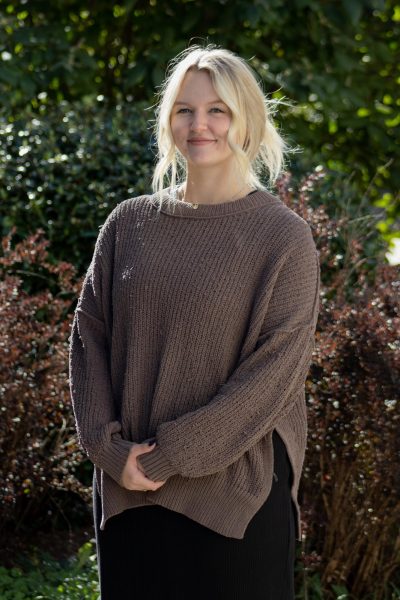
Grace Hagerman (she/her) is a senior studying journalism and political science. She loves coffee, music, books and most importantly AWOL.

Emma Pierce (she/her) is a junior studying CLEG. When not doing work for AWOL, she enjoys running, reading, and spending time with friends.
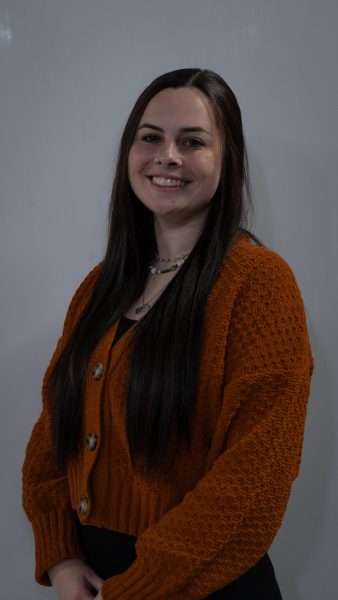
Casey Bacot (she/her) is a senior studying journalism. She enjoys tea, hanging out with her cat, and video games.



